I'm having the issue on a simple but fast-paced SpriteKit game, but I've reduced my code just to a bouncing ball and still get the issue to a lesser extent:
override func didMove(to view: SKView) {
super.didMove(to: view)
physicsWorld.contactDelegate = self
physicsWorld.speed = 1
physicsWorld.gravity = CGVector(dx: 0.0, dy: 0.0)
let borderBody = SKPhysicsBody(edgeLoopFrom: self.frame)
borderBody.friction = 0
self.physicsBody = borderBody
borderBody.contactTestBitMask = BallCategory
addBall()
}
func addBall() {
let size = CGSize(width: 20, height: 20)
let position = CGPoint(x: frame.width / 2, y: 50)
let texture = SKTexture(image: #imageLiteral(resourceName: "whiteCircle"))
let ball = SKSpriteNode(texture: texture, size: size)
ball.position = position
ball.physicsBody = SKPhysicsBody(circleOfRadius: size.width / 2)
ball.fillColor = .white
ball.lineWidth = 0
addStandardProperties(node: ball, name: "ball", z: 5, contactTest: 0, category: BallCategory)
ball.physicsBody?.isDynamic = true
addChild(ball)
launchBall()
}
func addStandardProperties(node: SKNode, name: String, z: CGFloat, contactTest: UInt32, category: UInt32) {
node.name = name
node.zPosition = z
node.physicsBody?.isDynamic = false
node.physicsBody?.affectedByGravity = false
node.physicsBody?.mass = 0
node.physicsBody?.restitution = 1
node.physicsBody?.friction = 0
node.physicsBody?.linearDamping = 0
node.physicsBody?.angularDamping = 0
node.physicsBody?.angularVelocity = 0
node.physicsBody?.contactTestBitMask = contactTest
node.physicsBody?.categoryBitMask = category
}
func launchBall() {
let ball = childNode(withName: "ball")!
ball.physicsBody?.velocity = CGVector(dx: 0, dy: 500)
}
This code results in a ball (SKSpriteNode) bouncing up and down. When I run this, CPU usage starts at around 10% on my iPhone 6s and then after increases to around 25-30% after maybe 30-60 seconds (no idea why it's increasing). Throughout all of this, the frame rate stays very close to 60 FPS, usually going no lower than 58 FPS (it's the same way when I run the full game).
Almost any time an alert pops up (e.g., text messages, logging into Game Center, etc.), the lag shows up and shows up at random times when I'm running the full game.
I've also tried deleting and re-running the app, cleaning the project, deleting derived data and running in Release mode. None of these worked permanently.
Should I give up on SpriteKit and try another framework? If so, which? Cocos2D?
Any help is appreciated.

